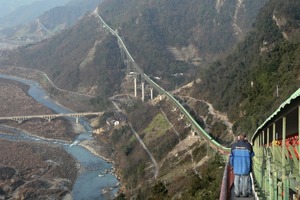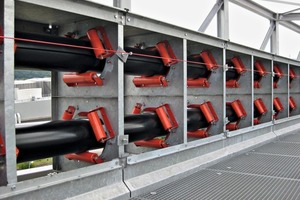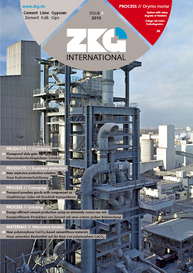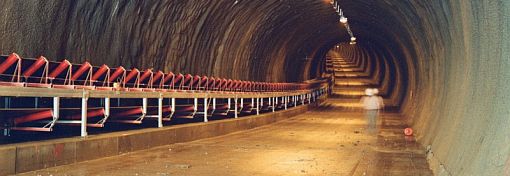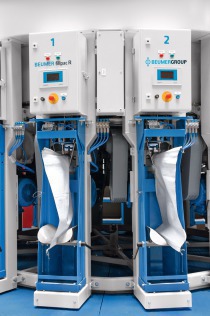Sustainable conveying solutions
Beumer belt conveyors are used when companies need to transport large quantities of bulk material from the quarry, mine or sand workings to the factory or port as cost effectively and quickly as possible. Trucks have considerable disadvantages in this regard. Road building is expensive, and the more raw materials have to be transported from the excavation point to the factory, the more journeys have to be made. Belt conveyors can overcome long distances, steep gradients and tight curves, and can be individually matched to the particular task and topography. With their slender lines, they overcome broken terrain and other obstacles such as rivers, roads, buildings or rail tracks. Horizontal and vertical curves in the routing can also be overlapped. Here tension-resistant and durable conveyor belts are used.
In doing so Beumer uses various calculation programs to determine the optimum belt design. These enable tensile forces to be calculated and also forces which occur due to acceleration and deceleration – always taking into account the intrinsic weight of the belt and the transported material. They are also used to calculate possible curve radii. Beumer also provides advance feasibility studies. In addition, the belt position is calculated in advance with the appropriate curve radius for the empty and loaded states.
Depending on the application, Beumer offers open troughed belt conveyors for higher throughputs and larger mass flows, as well as larger curve radii and enclosed pipe conveyors for products which need to be protected against the effects of the environment. They are also used in topographically demanding terrain which requires small-radius curves and large gradients. Open troughed belt conveyors can be covered or enclosed in order to minimize dust during conveying.
Belt conveyors are equipped with environmentally friendly electrical drives and low-energy belts. Depending on the topography, motors operating in both motoring and generating modes are usually designed with closed-loop controls. This enables optimum distribution of the load on the drive unit for different operating conditions. When the belt conveyor is running downhill, the system works in the generating mode. The recovered electrical energy is fed back to the public electricity supply via a feedback unit.
The Ukrainian cement manufacturer Altcem, in Kerch at the eastern tip of the Crimea, relies on a tubular belt conveyor from Beumer in its new cement works. This is intended to supply the factory with coal and slag which are delivered to the port. At the same time, the system transports cement and clinker to the port using a multi-function conveyor. In the first phase, the tubular belt conveyor transports 400 tons of clinker per hour from the cement works to the port in the upper run, that is to say on the top part of the conveyor. In the second phase, the system is to be expanded to transport 400 tons of clinker per hour from the factory to the port on the upper run and, at the same time, 200 tons of slag or coal from the port to the cement works in the lower run. The tubular belt conveyor has a belt width of 1400 mm and a distance between centers of 3855 m. The difference in altitude between port and cement plant is 35 m.

